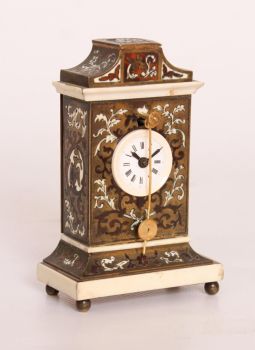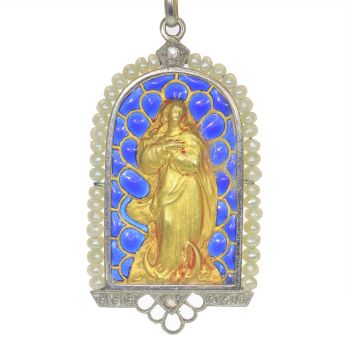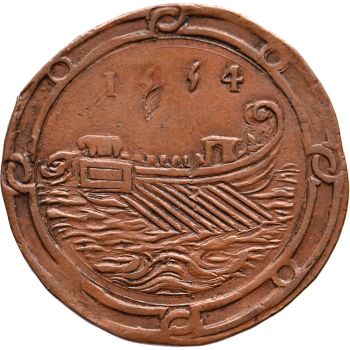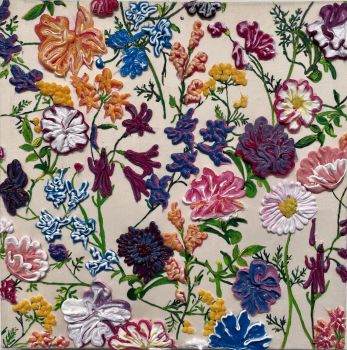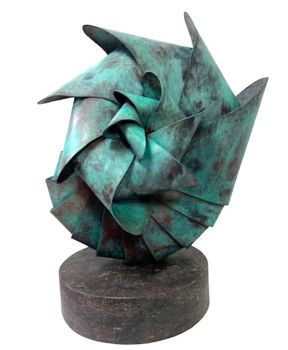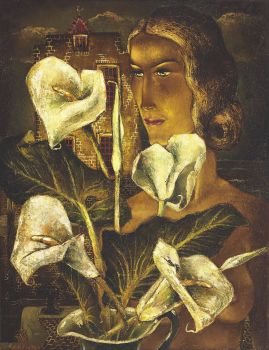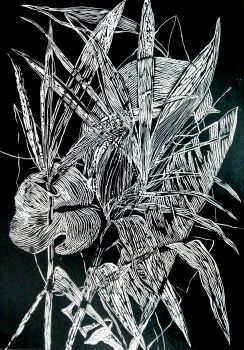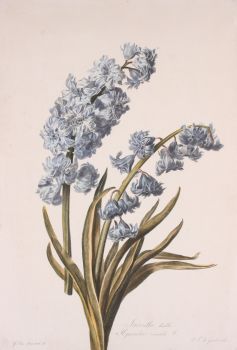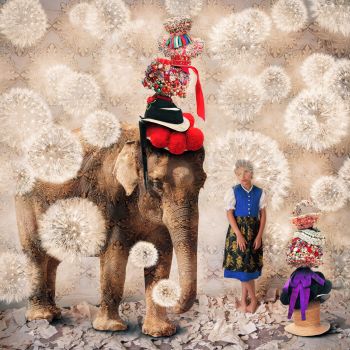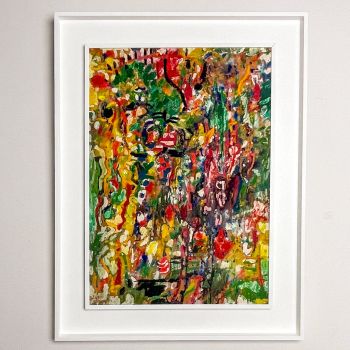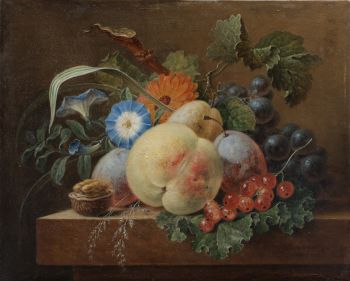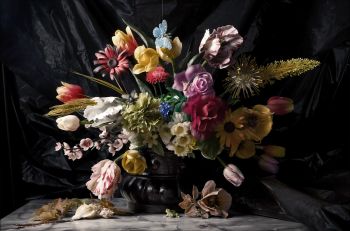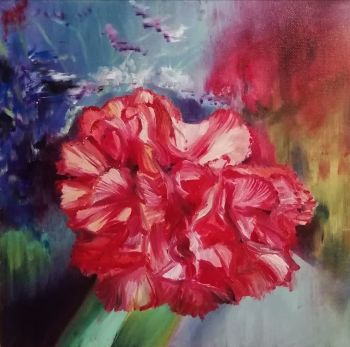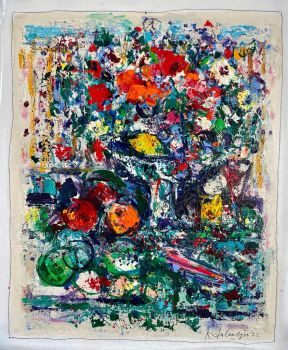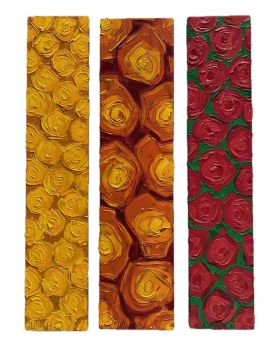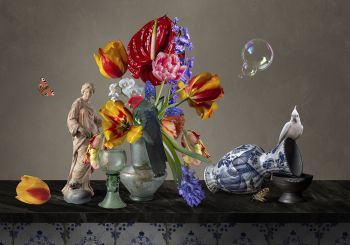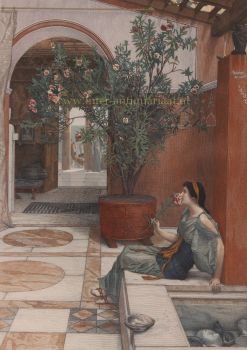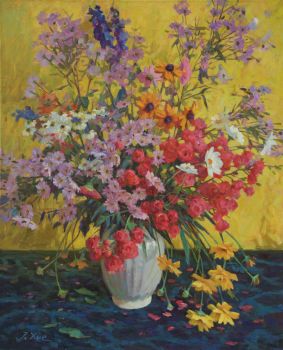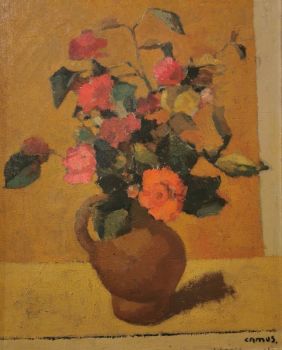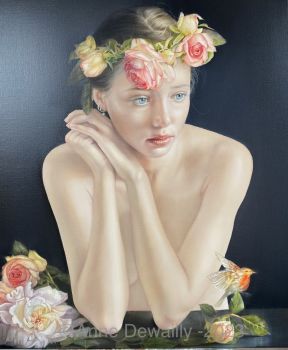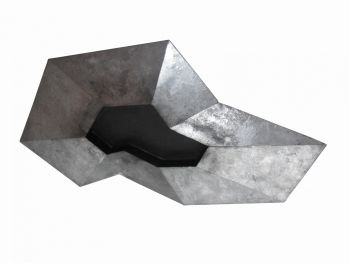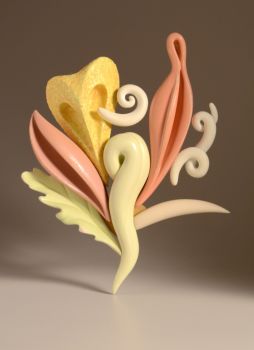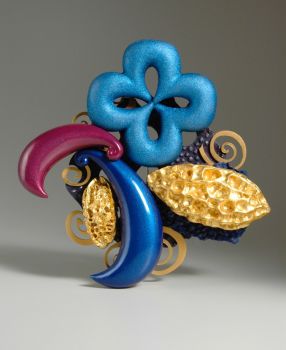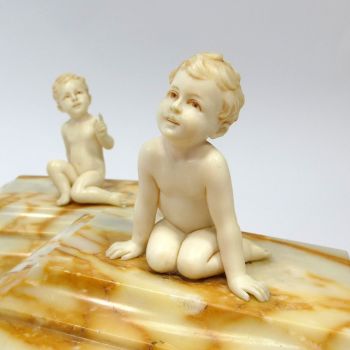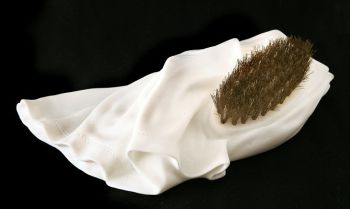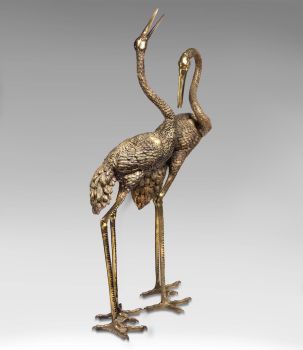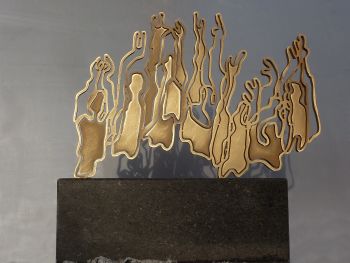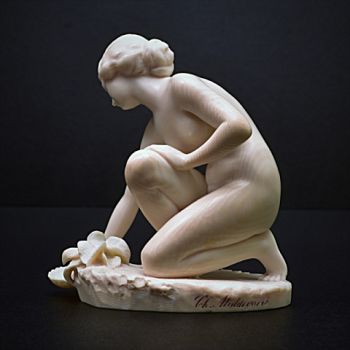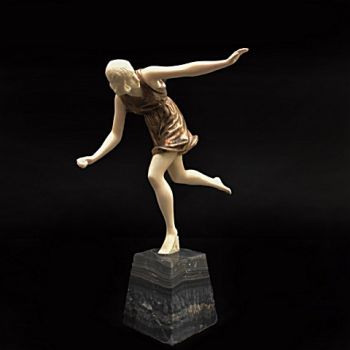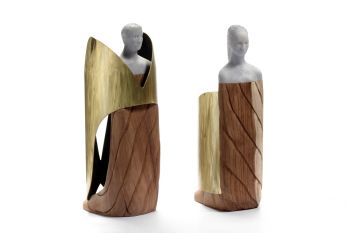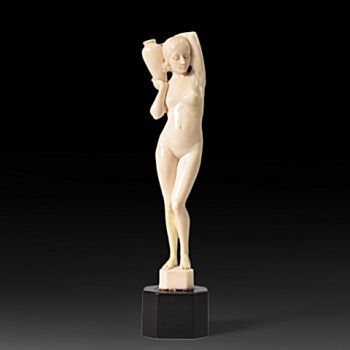Indian colonial inlaid work box, 18th century 1700 - 1750
Artista Desconhecido
OssoMadeiraMarfimMetalLatão
33 ⨯ 48 ⨯ 12 cm
ConditionGood
€ 3.500
Verkoulen Oriental & European Antiques
- Sobre arteAn exotic (Anglo-)Indian work box made of rosewood and ebony with ivory inlaid floral motifs, 18th century, around 1700-1750, Vizagapatam, India.
Dimensions: 32,5 x 47,5 x 12 cm.
This larger document or work box is an example of typical early 18th century craftmanship influenced by the Europeans but also the Indian taste and culture. The brownish with darker veining rosewood is considered as a precious hardwood and perfect to withstand the warm and moistures climate of the Indian ocean region and Indonesian archipelago. The ivory is etched and filled with black lacquer to form a shade on the flower buds. The ‘scrolling vines’ created out of black leaves and stems of the flower are inlaid with ebony wood. The top lid had four studded floral rosettes, and the sides of the box have brass handles. The front is also provided with an elegant brass lock plate and a key. On the inside we can find several compartments to store writing materials.
Vizagapatam was a fundamental center for production of luxurious objects exported to Europe and other ports. It was a part of Madras Presidency (the administrative divisions of Madras, province of British India with St. George fort) from the 17th century till the independence in 1947. The first written reference to ivory inlayed furniture in Vizagapatam was made in 1756 by Major John Corneille, who noted that the area was known for the quality of its Chintz (processed fabric), which is “esteemed the best in India for the brightness of its colours”, and that "the place is likewise remarkable for its inlay work, and justly for they do it to the greatest perfection". The British East India Company had a textile factory in Vizagapatam from 1668. Eventually by 1768 the British gained control over the whole area. It was a tradition in Vizagapatam to manufacture furniture in Western style, using ivory etched with lacquer inlaid into wood. The decoration they used in Vizagapatam was inspired from the Mughal culture. Even though the British had control over Vizagapatam and other regions, objects produced in Vizagapatam during the 18th century were also made for company officials from Holland as wel as the European market.
Condition: Good, some wear to the inlay work.
For a similar example mounted on a later stand, see: Christie's 17 February 2016, Live auction 12033, lot nr. 267.
NOTE: Please note that the shipping time takes longer for this object, because the need of CITES-Documents for export! - Sobre artista
Pode acontecer que um artista ou criador seja desconhecido.
Algumas obras não devem ser determinadas por quem são feitas ou são feitas por (um grupo de) artesãos. Exemplos são estátuas dos tempos antigos, móveis, espelhos ou assinaturas que não são claras ou legíveis, mas também algumas obras não são assinadas.
Além disso, você pode encontrar a seguinte descrição:
•"Atribuído a …." Na opinião deles, provavelmente uma obra do artista, pelo menos em parte
• “Estúdio de…” ou “Oficina de” Em sua opinião um trabalho executado no estúdio ou oficina do artista, possivelmente sob sua supervisão
• "Círculo de ..." Na opinião deles, uma obra da época do artista mostrando sua influência, intimamente associada ao artista, mas não necessariamente seu aluno
•“Estilo de…” ou “Seguidor de…” Na opinião deles, um trabalho executado no estilo do artista, mas não necessariamente por um aluno; pode ser contemporâneo ou quase contemporâneo
• "Maneira de ..." Na opinião deles, uma obra no estilo do artista, mas de data posterior
•"Depois …." Na opinião deles uma cópia (de qualquer data) de uma obra do artista
• “Assinado…”, “Datado…” ou “Inscrito” Na opinião deles, a obra foi assinada/datada/inscrita pelo artista. A adição de um ponto de interrogação indica um elemento de dúvida
• "Com assinatura ….”, “Com data ….”, “Com inscrição ….” ou “Tem assinatura/data/inscrição” na opinião deles a assinatura/data/inscrição foi adicionada por outra pessoa que não o artista
Você está interessado em comprar esta obra de arte?
Artwork details
Related artworks
- 1 - 4 / 12
Artista Desconhecido
A Surinam-themed Amsterdam long-case clock1746 - 1756
Preço em pedidoZebregs & Röell - Fine Art - Antiques
 Com curadoria de
Com curadoria deGallerease Magazine
Artista Desconhecido
Japanese transition-style lacquer coffer 1640 - 1650
Preço em pedidoZebregs & Röell - Fine Art - Antiques
1 - 4 / 20Artista Desconhecido
The Stamford Raffles Secretaires.1800 - 1813
Preço em pedidoZebregs & Röell - Fine Art - Antiques
Artista Desconhecido
UM MODELO JAPONÊS DE UM NORIMONO, UM PALANQUIM1650 - 1700
Preço em pedidoZebregs & Röell - Fine Art - Antiques
1 - 4 / 24- 1 - 4 / 24
Artista Desconhecido
IMPORTANTE E RARA GRANDE PINTURA DE 'ESTILO DE EMPRESA' ÍNDIO EM MARFIM QUE REPRESENTA UM DESFILE1850 - 1900
Preço em pedidoZebregs & Röell - Fine Art - Antiques
 Com curadoria de
Com curadoria deDanny Bree
1 - 4 / 24- 1 - 4 / 5







